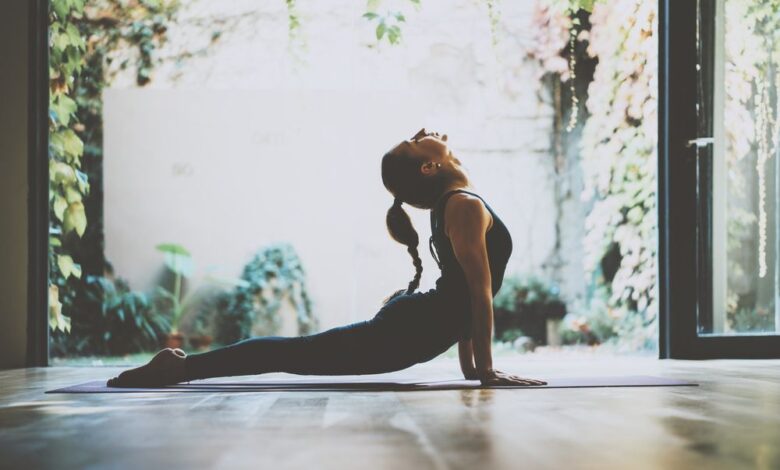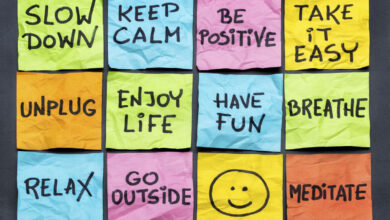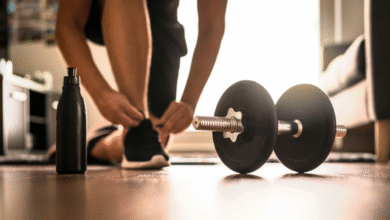Simple Yoga Poses for Beginners: A Gentle Path to Flexibility and Calm

Have you ever thought about starting yoga but felt a little intimidated by all the complex poses you see online? Maybe you’ve seen people balancing on their hands or twisting into advanced shapes and thought, “That looks impossible for me.” The truth is, yoga doesn’t have to be complicated to be effective. In fact, the simplest yoga poses often bring the most benefits, especially when you’re just beginning.
Yoga is more than just exercise—it’s about connecting your body, breath, and mind. Even a few basic poses can help reduce stress, increase flexibility, and improve overall well-being. If you’re curious about how to get started, this guide will walk you through simple yoga poses that are perfect for beginners, along with tips on how to practice them safely and comfortably.
Why Start with Simple Yoga Poses?
When you’re new to yoga, it’s easy to feel overwhelmed by advanced routines. That’s why starting with simple poses is the best way forward. These poses allow you to:
- Build confidence without straining your body
- Learn proper alignment before progressing
- Improve strength and flexibility gradually
- Focus on breathing and mindfulness instead of perfection
By practicing beginner-friendly poses, you lay a strong foundation for a sustainable yoga journey.
The Importance of Breath in Yoga
Before diving into the poses, let’s talk about something that makes yoga unique—breathing. In yoga, breath is as important as movement. Controlled breathing, often called pranayama, helps calm the nervous system and enhances focus.
As a beginner, simply remembering to breathe deeply during each pose makes a huge difference. Inhale as you lengthen or open your body, and exhale as you fold or relax. This rhythm creates balance between effort and ease.
Mountain Pose (Tadasana): The Foundation
Mountain Pose may look simple, but it sets the tone for all standing yoga poses. It teaches you how to stand tall, engage your muscles, and connect with your breath.
How to do it:
- Stand with feet together or slightly apart.
- Press your feet firmly into the ground.
- Roll your shoulders back and relax your arms at your sides.
- Lengthen your spine and lift your chest.
- Breathe deeply, feeling grounded and steady.
Mountain Pose improves posture and body awareness, making it a great starting point for any yoga practice.
Child’s Pose (Balasana): A Restful Pause
Child’s Pose is one of the most relaxing positions in yoga. It’s often used as a resting posture between more challenging poses, but it also works beautifully on its own for stress relief.
How to do it:
- Kneel on the floor with your big toes touching and knees slightly apart.
- Sit back on your heels and stretch your arms forward.
- Rest your forehead on the mat and breathe slowly.
- Stay here for a few breaths or as long as it feels comfortable.
This pose gently stretches your back, hips, and thighs while calming the mind.
Cat-Cow Stretch (Marjaryasana-Bitilasana): Gentle Spine Flow
The Cat-Cow sequence is perfect for warming up the spine and improving flexibility. It also teaches you to sync movement with breath.
How to do it:
- Start on hands and knees with wrists under shoulders and knees under hips.
- Inhale, arch your back, lift your chest and tailbone—this is Cow Pose.
- Exhale, round your spine, tuck your chin and tailbone—this is Cat Pose.
- Continue flowing with your breath for 5–10 rounds.
This sequence eases tension in the back and neck while improving mobility.
Downward Facing Dog (Adho Mukha Svanasana): Energizing Stretch
Downward Dog is one of the most recognized yoga poses. It stretches the entire body and builds strength at the same time.
How to do it:
- Begin on hands and knees.
- Spread your fingers wide and tuck your toes.
- Lift your hips toward the sky, straightening your legs as much as comfortable.
- Press your heels gently toward the ground.
- Keep your head relaxed between your arms.
This pose strengthens arms and shoulders while stretching hamstrings, calves, and spine. For beginners, bending the knees slightly can make it more comfortable.
Warrior I (Virabhadrasana I): Strength and Stability
Warrior I builds strength, stability, and confidence. It’s a great way to open the hips and stretch the upper body.
How to do it:
- Start in Mountain Pose. Step one foot back about 3–4 feet.
- Turn your back foot slightly outward.
- Bend your front knee to form a 90-degree angle.
- Raise your arms overhead with palms facing each other.
- Keep your chest lifted and breathe deeply.
This pose strengthens legs, tones the core, and boosts endurance.
Warrior II (Virabhadrasana II): Focus and Balance
Warrior II is another beginner-friendly pose that enhances focus and stability.
How to do it:
- From Warrior I, open your hips and arms to the side.
- Keep your front knee bent and your back leg straight.
- Extend your arms parallel to the ground, palms facing down.
- Gaze softly over your front fingertips.
This pose strengthens legs and arms while improving concentration.
Tree Pose (Vrksasana): Balance and Calm
Tree Pose is an excellent way to practice balance while staying calm and steady.
How to do it:
- Stand in Mountain Pose.
- Shift weight to one foot and place the sole of the other foot on your calf or thigh (avoid the knee).
- Bring your hands together at your chest or lift them overhead.
- Focus your gaze on a fixed point to maintain balance.
Tree Pose builds stability and strengthens core muscles, while also promoting mental focus.
Bridge Pose (Setu Bandhasana): Gentle Backbend
Bridge Pose is a beginner-friendly backbend that strengthens the lower body and opens the chest.
How to do it:
- Lie on your back with knees bent and feet hip-width apart.
- Place arms by your sides, palms down.
- Press into your feet and lift your hips.
- Keep thighs parallel and breathe steadily.
This pose strengthens glutes, lower back, and legs while energizing the body.
Corpse Pose (Savasana): The Relaxation Pose
Every yoga practice usually ends with Corpse Pose. It may seem simple, but it’s deeply restorative.
How to do it:
- Lie flat on your back with arms at your sides.
- Close your eyes and let your feet fall naturally outward.
- Breathe deeply and let go of all tension.
- Stay in this pose for 5–10 minutes.
Savasana allows the body and mind to absorb the benefits of the practice, leaving you refreshed.
Tips for Practicing Yoga as a Beginner
Starting yoga doesn’t require perfection. Here are some tips to make your journey smoother:
- Listen to your body – Never push into pain. Gentle stretching is enough.
- Use props if needed – Blocks, straps, or pillows can provide support.
- Practice regularly – Even 10 minutes a day builds progress.
- Focus on breath – Breathing deeply enhances every pose.
- Stay patient – Flexibility and strength improve over time.
Benefits of Simple Yoga Poses
Practicing these beginner poses regularly brings many benefits:
- Improved posture and flexibility
- Reduced stress and anxiety
- Better balance and coordination
- Increased strength and energy
- Enhanced focus and relaxation
The beauty of yoga is that you don’t need to be advanced to experience these benefits.
Combining Poses into a Beginner Routine
If you want to create a short practice, here’s a simple sequence:
- Mountain Pose (Tadasana) – 1 minute
- Cat-Cow Stretch – 5 rounds
- Downward Dog – 5 breaths
- Warrior I – 5 breaths per side
- Warrior II – 5 breaths per side
- Tree Pose – 30 seconds per side
- Bridge Pose – 5 breaths
- Child’s Pose – 1–2 minutes
- Savasana – 5 minutes
This routine takes about 15–20 minutes and gives you a full-body experience.
Final Thoughts: Embrace the Simplicity
Yoga doesn’t have to be complicated to be powerful. Simple poses can make a big difference in how you feel each day. They help you slow down, connect with your body, and bring peace to your mind.
The most important thing is consistency. Practicing a little bit each day is far more valuable than pushing yourself into difficult poses occasionally. As you grow comfortable with the basics, you’ll naturally feel ready to explore more.
So roll out your mat, take a deep breath, and start with these beginner-friendly yoga poses. You might be surprised at how much calmer, stronger, and more balanced you feel—both on and off the mat.



